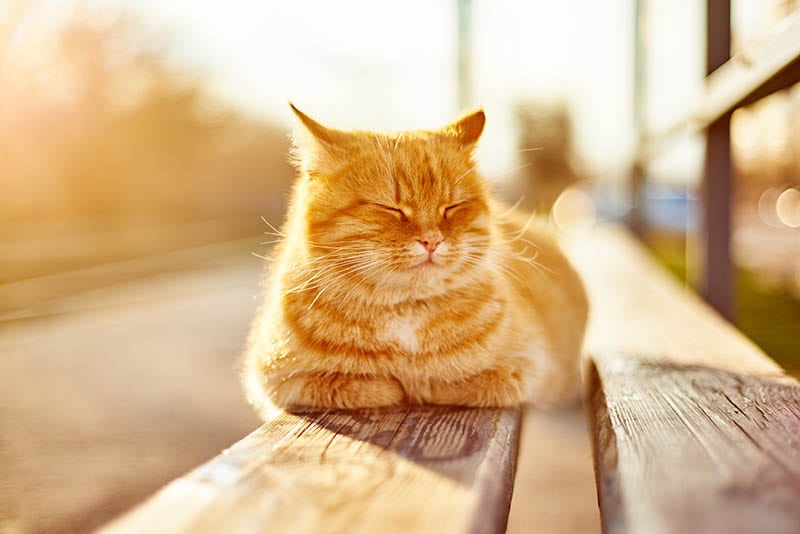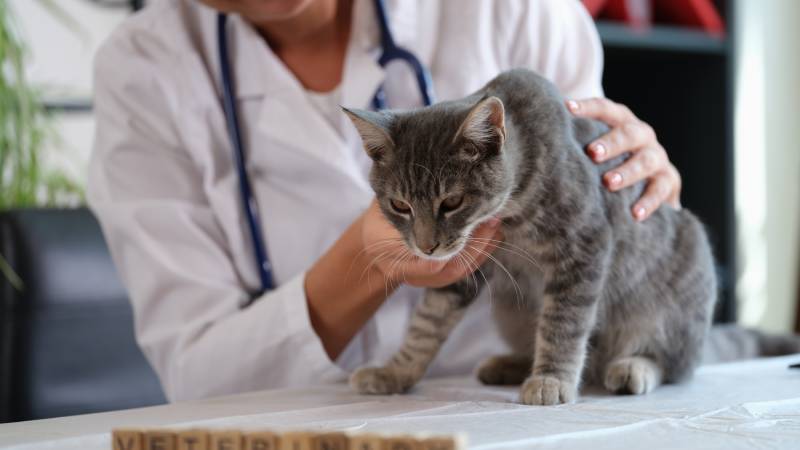
Cats aren’t too different from us—they like a comfortable temperature. Anyone who has had a cat in their family has probably seen them lie on a cool surface to cool down at one time while snoozing by the fireplace to warm up at another time. They are very good at regulating their body temperature, as we’ll see.
However, temperatures in excess of 90 degrees F for a prolonged period of time can be dangerous to cats. Additionally, every cat owner should know what signs to watch for when it comes to heat stress or overheating. Most cats enjoy an ambient temperature between 60 and 80 degrees, with humidity below 70%. This article will explore all of that and more.
Can Cats Regulate Their Body Temperature?
Yes—in fact, cats are very good at regulating their body temperature. Some physical ways cats avoid overheating include lying on a cool surface, finding a breeze, and staying out of direct sun. Internally, cats can dilate or “open up” their blood vessels, meaning more heat is lost from these vessels at the skin’s surface. Cats are also able to sweat (through their footpads only), and will sometimes lick their coat so that the saliva imitates the function of sweat. How clever!

What Temperature Is Too Hot for Cats?
It is worth mentioning here that every cat is different, and no single temperature is “too hot” for any given cat. This depends on the cat’s age, regular environment, access to water, disease status, activity levels, and humidity. However, the general consensus is that temperatures above 90 degrees for a few hours will start to make a cat uncomfortably hot. What Are the Signs of Overheating in Cats?
Overheating, heat stress, and heat stroke can be dangerous. Red flags to be aware of include:
Here, we are talking about overheating, also known as hyperthermia, as a result of a hot environment or over-exertion. This is very different from a fever, in which the body has lost the ability to regulate its temperature. Fever is caused by infection, inflammation, auto-immune disease, and cancer.

What Can I Do to Prevent My Cat from Getting Too Hot?
If you live in a hot part of the world, there are a number of things you can do to prevent your cat from overheating:
Can I Check My Cat’s Body Temperature?
This can be difficult, as thermometers designed to go under the tongue or armpit do not work well in cats. Newer infra-red thermometers used in people have not been validated in cats, and are likely inaccurate. The best way to attain a body temperature reading is—as you’ve likely seen at the vet clinic—by using a rectal thermometer. If you have a particularly placid cat, and you’re happy to attempt this, a cat’s body temperature should lie between 100.5 degrees F and 102.5 degrees F.
Conclusion
While cats are generally durable and capable of adapting to different temperatures, they are also sensitive to high temperatures. Temperatures in excess of 90 degrees can be uncomfortably hot for cats, particularly for more than 2 hours. Use the above tips to ensure your cat is cool.
If you are concerned your cat may be experiencing hyperthermia, don’t hesitate to contact your veterinarian.
Featured Image Credit: Anatolly Karlyuk, Shutterstock







